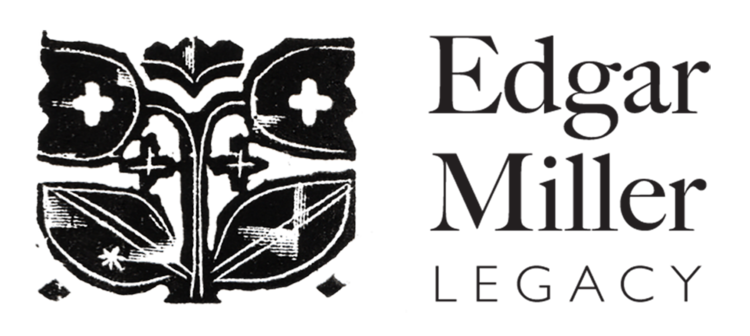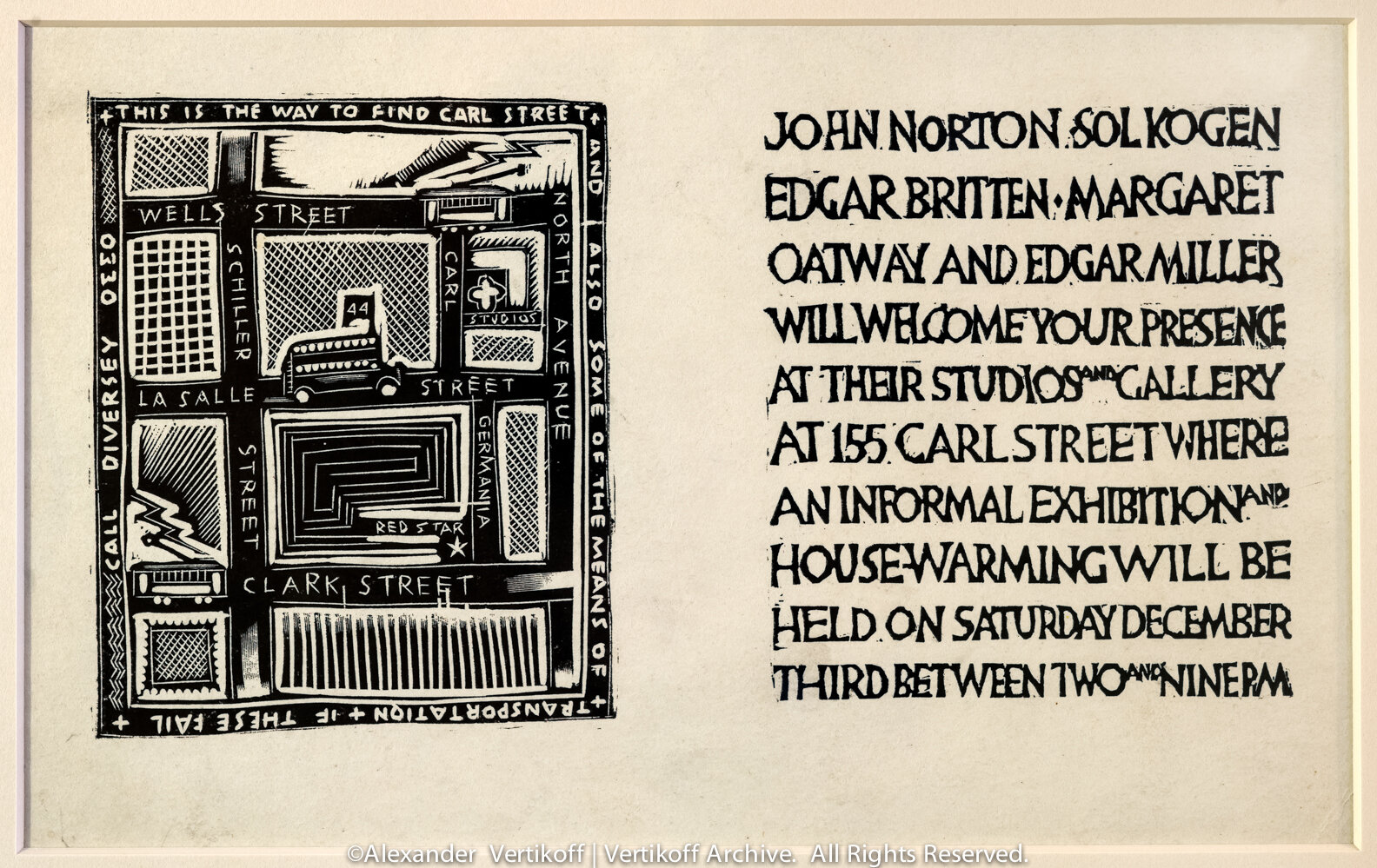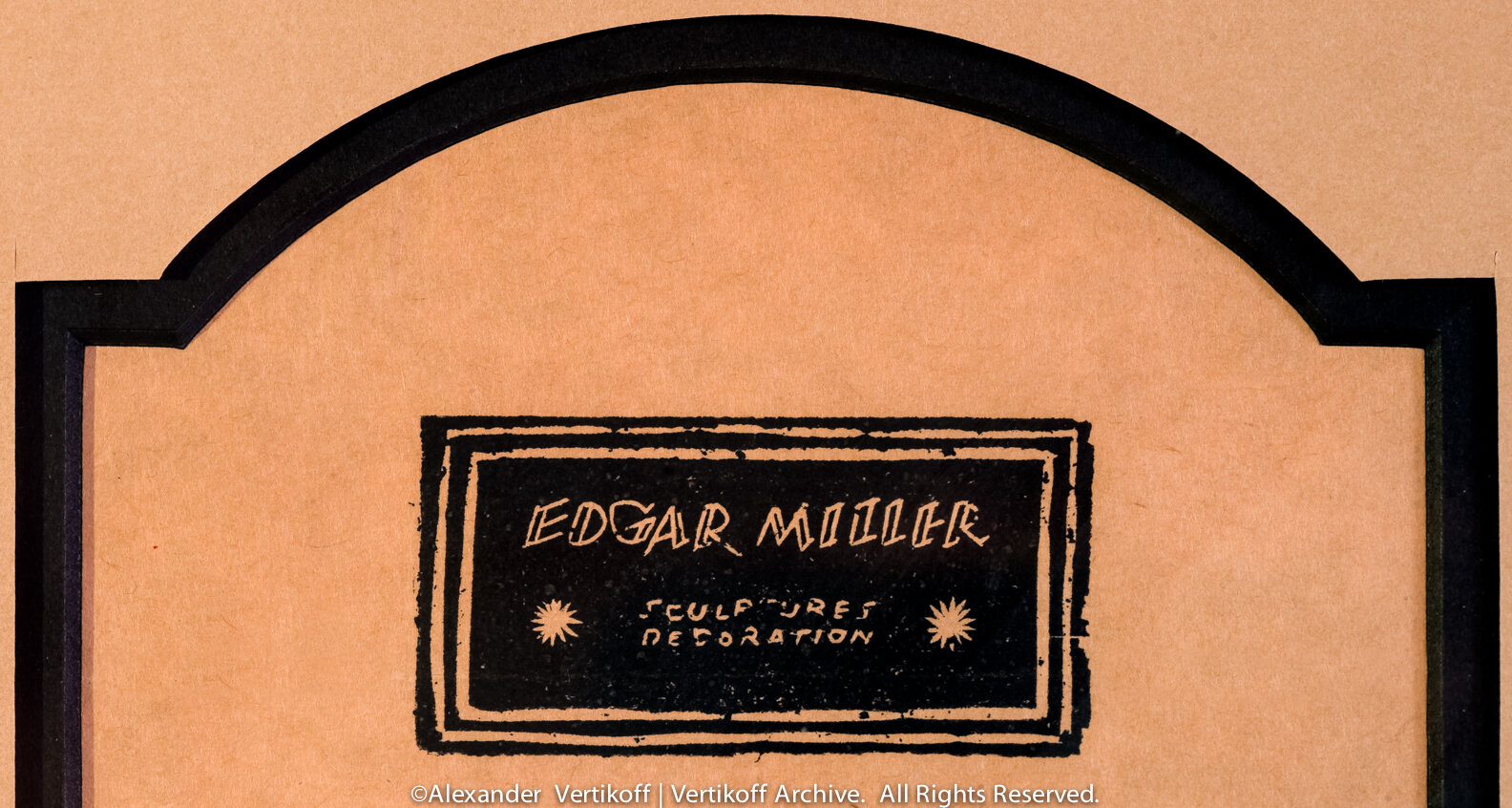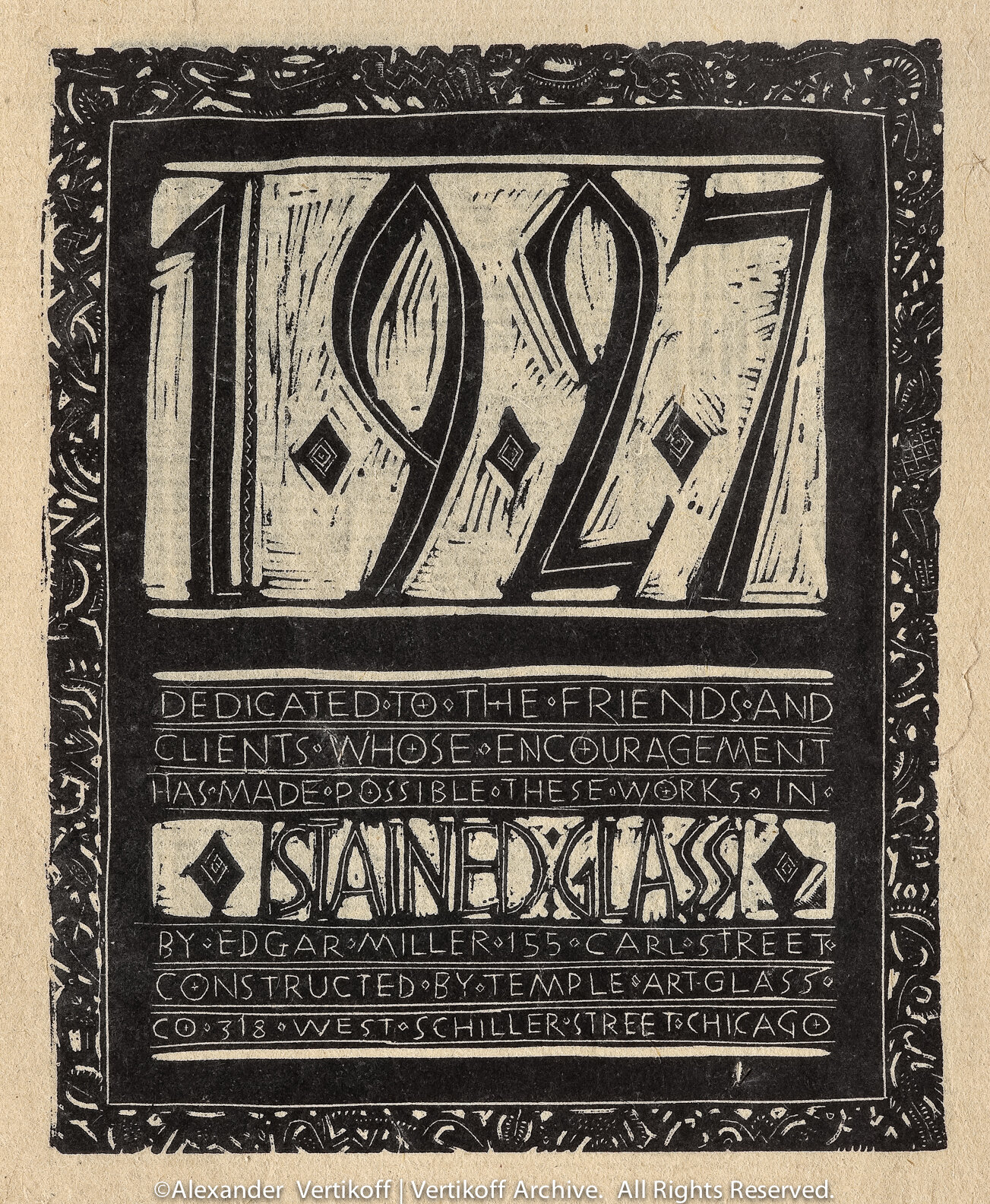Block Prints
Edgar Miller began his career as an independent artist working from a number of small apartments, and then eventually his own gallery and workshop, The House at the End of the Street (19 W. Pearson), where he produced hundreds of woodblock prints and likely thousands of copies of his homemade cards, posters, advertisements, and printed ephemera. Breaking out onto Chicago’s Towertown scene in the early 1920s, the young artist experimented with the block printing medium by stretching its utility while expanding his unique vocabulary of decorative patterns and motifs. Even from his modest workshop, Miller keenly worked to master the techniques of woodcutting, inking, layering, and graphic design. Over the course of the next decade, Miller would produce everything from letterheads, logos, and business cards, to stamps, flyers, and book covers. Becoming well-known as extraordinarily skilled and speedy in his craftwork, Miller was commissioned by fellow creative professionals and local establishments, like the Dil Pickle Club, to produce advertising and graphic design projects that he would expertly embellish and turn into miniature works of art.
Woodblock printing was a very popular medium during the Interwar Era (1917-1939) for a number of reasons, in large part due to the utility of being able to make hundreds of quick copies without the need for heavy machinery. For the most part, Edgar Miller would design this work extemporaneously by hand, adding artful flourishes and incorporating shading and textures into the rigid medium. He would often use multiple blocks or layers to produce a final piece, meticulously creating detailed line work and color customization over successive layers. Miller had a natural awareness of how to use negative space, and produced subjects by highlighting missing color and shapes, often with the base layer of color ending up as the image’s foregrounded subject matter, appearing as if on top. In many ways, the restrictions of the technical aspects of printmaking made him especially adept at thinking of his artwork in highly texturized, layered ways, and would be lessons he took with him when working in other mediums later on in his career.
Block Prints
Click on an item to learn more. Hover over the image to learn more. Or click the small white circle at the bottom right of the image popup to view a brief description. You can also swipe through the images once they appear on your screen.













